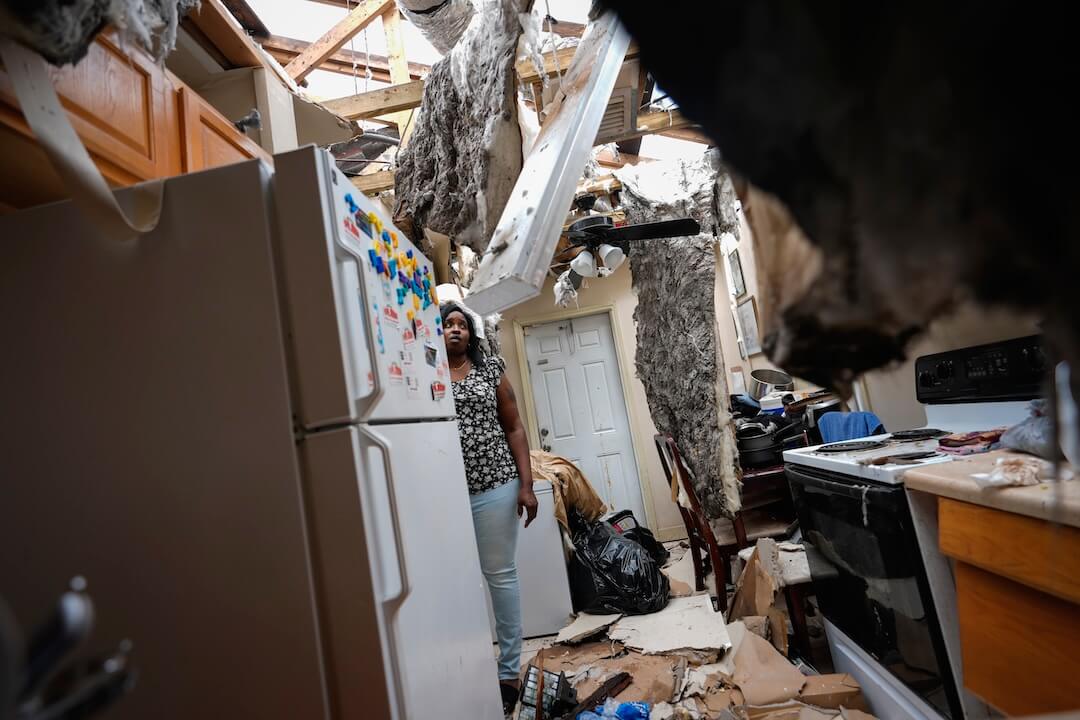What does a “media inventor” do? Take it from someone who uses the term to describe himself: “Media inventors,” writes Robin Sloan, “feel compelled to make the content and the container.”
Sloan’s new creation, “Fish,” is both — more than an essay, but not like other iPhone apps you’ve downloaded. Sloan loosely calls it a “tap essay,” which is pretty self-explanatory: You read what’s on the screen and tap it to move on.
 As an essay, “Fish” is about how we have adopted certain ways of calling out good stuff on the Web – likes and faves – and yet we’re always moving on to the next thing.
As an essay, “Fish” is about how we have adopted certain ways of calling out good stuff on the Web – likes and faves – and yet we’re always moving on to the next thing.
As an app, Fish is a post-Web way of structuring a narrative, a way of enhancing focus by eliminating choice. On the Web, each link offers a choice: keep reading this or see what’s on that other page? Fish, on the other hand, has no links, no back button, no way to skip ahead.
Taken together, the essay and the app show how the container and the content shape one another. The writing is short and punchy, easy to read on the small screen. Typographic formatting emphasizes points and injects humor. The native app ensures that the app instantly flashes to the next screen when you tap the screen.
Because you’re reading this on the Web, this is a good place to stop, download the app, read it, and come back. I’ll wait…
It’s an enjoyable read view tap, eh?
Here are some of the things I learned (and relearned) about this new form of storytelling from “Fish.”
Choose the right medium for your message
“Fish” has its roots in Sloan’s concerns about the distractibility of the Web. “I am such a fan of the Web, the open Web. That’s where I feel most comfortable, where I feel most native,” he told me via Skype. “But over the last few years I have been becoming aware of its limits. I think those limits all have to do with attention and focus.”
He should know something about that, considering that he recently left a job at Twitter. If you’re reading this on a desktop or laptop, you can see what he means. Look at all the tabs or windows open on your browser. Plus the bookmarks toolbar, extension icons and navigation buttons.
“You’re surrounded by this frame of distraction,” Sloan said.
If Sloan had laid out his concerns in a blog post, people would have read it in the same distracting environment as everything else. So he decided to marry form and content. It would be an essay about focusing one’s attention and affection, in an app that focused one’s attention and affection.
This marriage carried through to the writing and coding process. Sloan wrote what he calls a “sketchy rough draft” in a text editor and then started to refine it in a prototype of the app itself.
Writing [tap], good writing, [tap] has a rhythm
Working within the app, Sloan started to figure out how he wanted the essay to unfurl, “to define the beats.” He played with how the words would appear on each screen – sometimes an entire sentence at once, sometimes just a word or phrase at a time.
“I would see where the rhythm felt right or felt clumsy,” he told me. “I think any kind of writer would be familiar with the revision process, except that instead of just revising the words, you’re revising the choreography of the words.”
The rhythm becomes obvious through the tapping, which act as an engine that drives the essay forward. The tapping does something else, too: It paces the reading. With each tap, you tell the app, “I’m with you. What’s next?”
There’s no going back (or sideways)
It would be impossible to navigate the Web without the “back” button. And yet it encourages us to flit about from one thing to another with minimal attention. Click, scroll, scan.
So Sloan decided that there would be no way to go backwards in “Fish.” Some people told him that “kind of freaked them out,” but they ended up focusing more on what they were reading.
Nor does “Fish” have links, for the same reason.
In doing this, Sloan isn’t just removing the Web’s distractions and tyranny of choice. He’s enforcing the linear narrative more than we could do with paper, and more than we usually do online.
We often think that digital storytelling should put control in the hands of the user. Many interactive presentations are designed to make sense regardless of how you make your way through. Sloan, though, asks the user to cede control, just follow along.
No turns. No reverse. Just a subtle progress bar at the top of the screen. The reader controls the pace, but he can only go forward.
In the hands of your readers, your best lines can become a chorus
Readers can tweet some of the key lines in “Fish” by tapping a little Twitter icon. Naturally, this helps spread the word about Sloan’s essay – the tweets link to Sloan’s website – but it also creates a chorus.
If you tweet his line, “What does it mean to love something on the internet today?” you too are posing that question.
“When you share a line from a book (or movie or song) on Facebook or Twitter, often you’re wearing it like a badge, taking it on as part of your identity,” Sloan told me by email. “It’s almost as if you’re saying it along with the author, which I think is pretty cool.”
Reaction to this feature has been mixed, he said; it felt like an “applause” sign to some. That probably means he hasn’t figured out how to integrate this gracefully.
But when Jon Mitchell, a writer for ReadWriteWeb, tweeted that question, it sparked this response:
To like something more than ironically. RT @JonMwords: “What does it mean to love something on the internet today?” robinsloan.com/fish
— Chris R. Albon (@chrisalbon) March 21, 2012
Those tweetable lines create “eddies of conversation,” Mitchell wrote. “You’re injecting great reminders of realness right into the Twitter vein.”
On the Web, space is infinite; On an iPhone, it’s precious
Sloan’s decision to write within the app itself shaped not just the rhythm, but the length and flow.
When he was tapping through one part, a digression from his main point, he realized he was bored. So he cut it. Less than half of what he first wrote made it into the final version.
You can see how he had to choose his words carefully because the text on each screen had to stand on its own. Could this idea carry across several screens? Was it worth making the letters smaller so that everything could fit on each one?
The effect of writing within these constraints: Short, declarative writing. Easy to grasp, despite the abstract subject matter. No flourishes. No fat.
Most of the sentences are so short, it’s hardly like reading at all – it’s more like watching.
“We’ve all become really good at reading really short blocks of text,” Sloan said. “The idea of delivering even a much longer text in those bursts … I think you’re using a muscle that we’ve all kind of trained.”
Don’t overlook the visual nature of the written language
Throughout “Fish,” it feels like Sloan is speaking directly to you. That’s partly because the essay is essentially a bar manifesto. It’s also due to his use of all caps, boldface and italics – simple tools of emphasis and humor that are effective in conveying meaning even in a modern wrapper.
“I think there’s overlooked potential in text, in just the way we use words on the Web,” Sloan said. “I’m a believer in words. I was looking for a way to stay focused on words, but give a little extra twist, an amplification.”
Throughout the essay, you can hear his voice rising and falling – loud and excited when he makes a point with one of those tweetable lines that fill the screen, piquant or ironic when he italicizes a portion of a sentence.
He didn’t plan this going in. “It’s just like any other kind of writing process; a lot of these things emerge organically. You see the rhythm yourself; you see the opportunities.”
All those devices end up creating another layer to the essay, one that wouldn’t be there if it had been written, say, like this.
You may not know what you’re doing, and that’s OK
In one respect this is literally true: Sloan had to learn Objective C to program the app. (He worked through an iOS course from Stanford.)
But it’s also true in a general sense. At one point I asked Sloan what he was thinking when he repeated words and phrases in “Fish.” He remarked that he feels like he’s just a half-step ahead of the people who use the app in understanding what works.
“I don’t know much about this myself,” he said.
Later, when I asked what’s next, he said he’s thinking of doing a tap essay that’s longer, perhaps something episodic or one that incorporates more images.
“The fact that we have those tools and can manipulate text in that way, I think there are lots of opportunities that we haven’t explored. I think we should spend time with that, collectively.”
It looks like some people are going to spend some time exploring this — the ideas in the essay as well as the app.
Went thru @robinsloan‘s Fish app for the 2nd time (an act of love!) & found something new robinsloan.com/fish Hint: it’s triggered by a tap
— Greg Linch (@greglinch) March 24, 2012










Comments